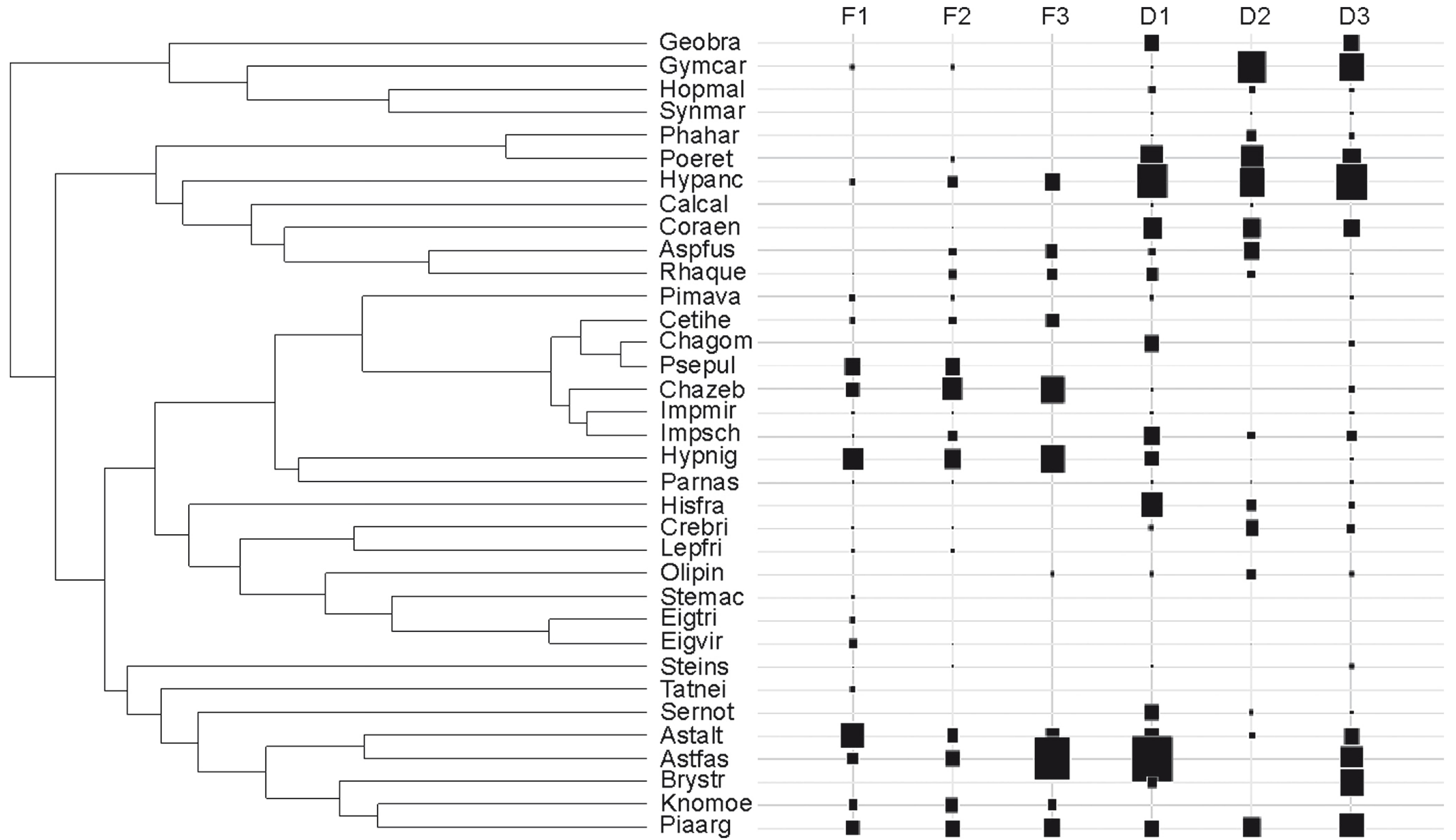We tested the hypothesis that streams in deforested areas shelter different fish communities to nearby forested areas, and that these disparities are due to environmental parameters that limit or benefit different species according to their functional traits. We compared the community composition of three south east Brazilian streams flanked by riparian forest with three nearby streams in deforested areas. The following functional traits were considered: diet, habitat use, water flow preference, size, and hypoxia tolerance. Differentiation between forested and deforested streams corresponded with the different contributions of three functional groups. Species reported in the literature to be hypoxia tolerant, and exhibiting a variable combination of the other traits prevailed in deforested streams, although we did not find substantial differences in oxygen levels between forested and deforested streams. In forested streams, benthic species associated with a high water flow and an insectivorous diet were dominant. Changes in streams induced by deforestation which are associated with habitat availability, food resources, and physicochemical conditions appear to restrict the occurrence of specialized species and instead benefit tolerant generalists.
Community ecology; Deforestation; Functional diversity; Traits






